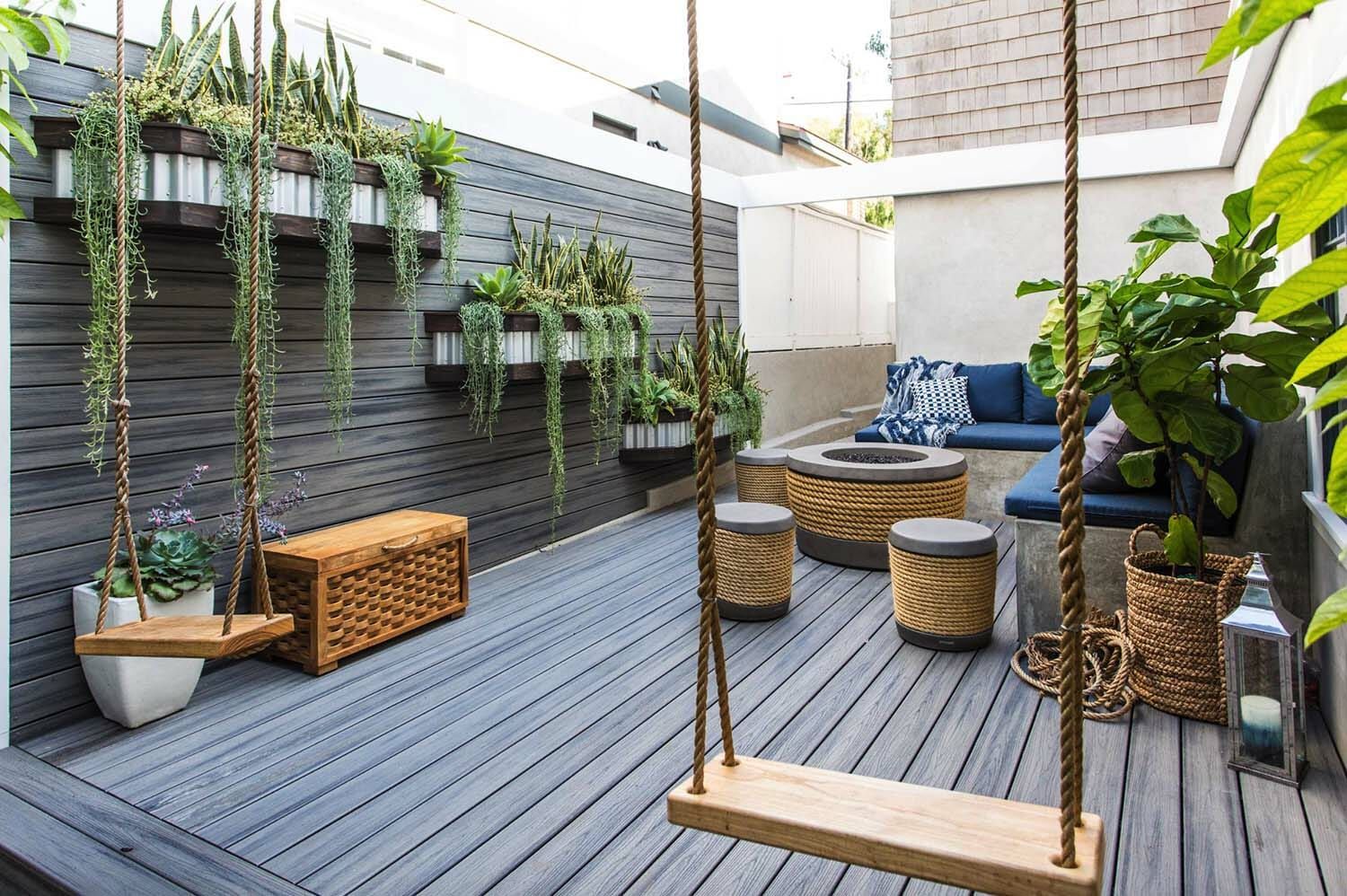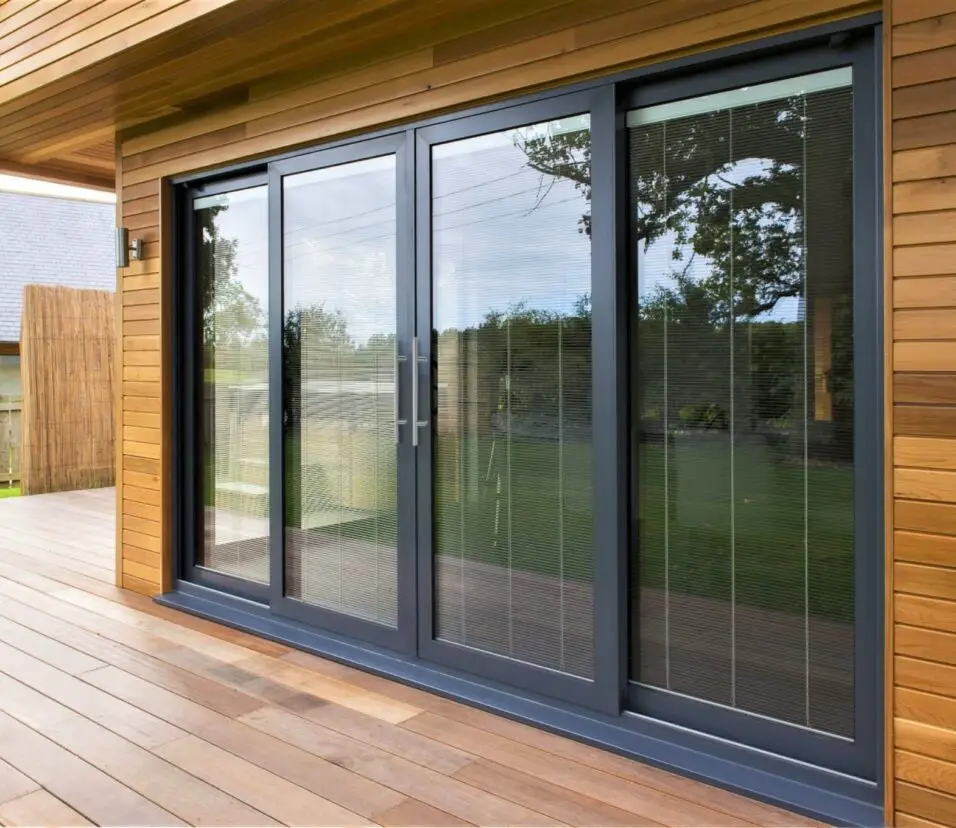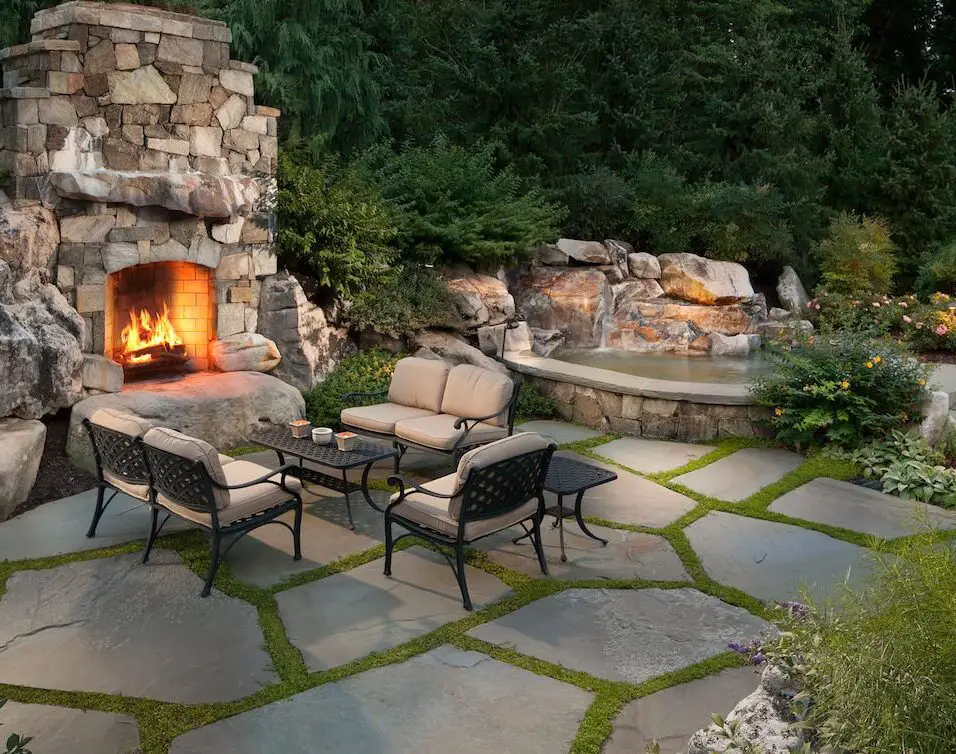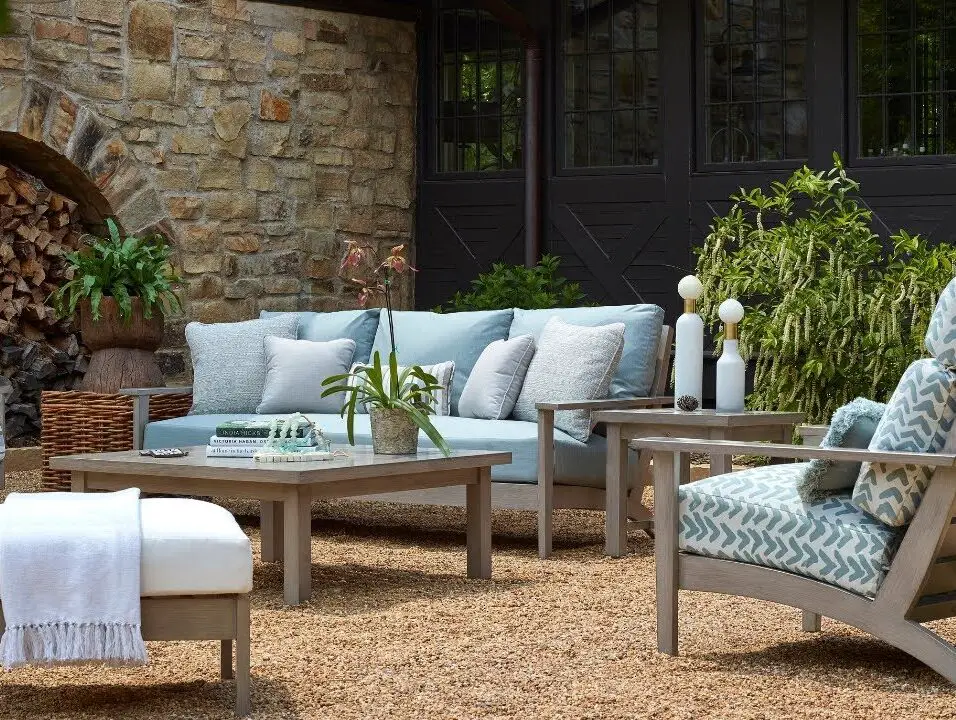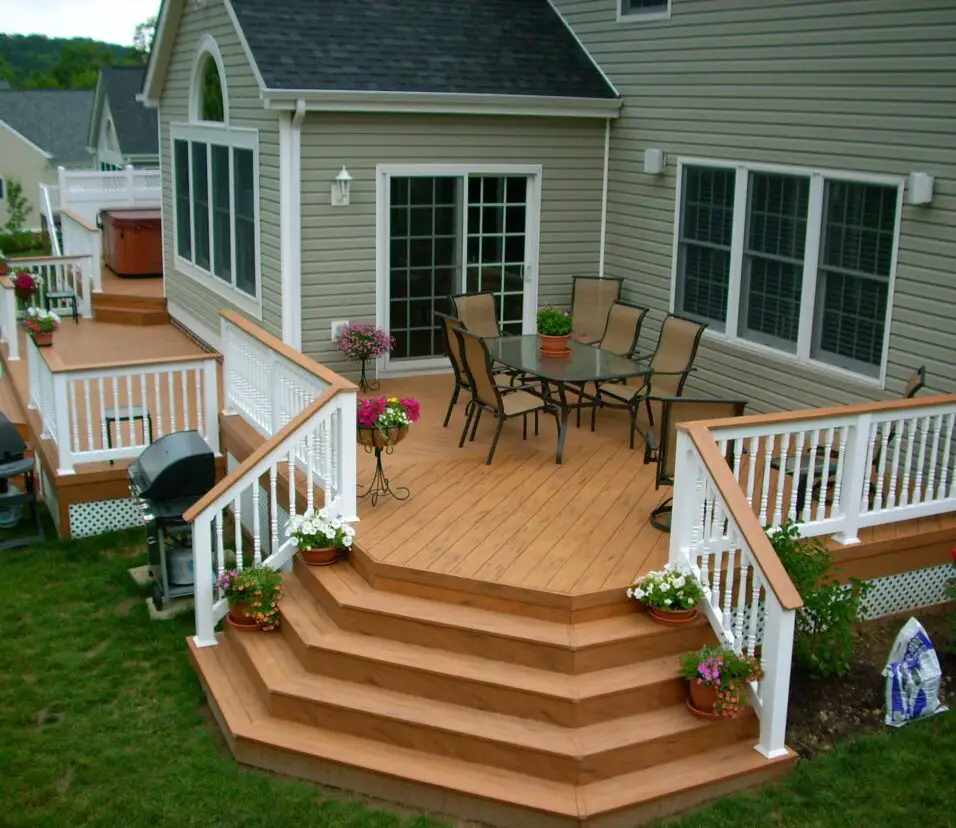How To Decorate Patio With Plants
Introduction
How To Decorate Patio With Plants: Opt for a mix of plants that vary in height, foliage, and flowering patterns to create a visually engaging and dynamic atmosphere. Think about incorporating a combination of potted plants, hanging baskets, and trellis climbers to add layers and depth to your patio. While flowers are often the stars of the show, don’t underestimate the impact of lush green foliage. Foliage plants, like ferns, ornamental grasses, and tropical leaves, can add texture and visual interest even when they are not in bloom.
Mixing different leaf shapes and colors can elevate your patio’s aesthetics and make it a stunning retreat year-round. In addition to choosing the right plants, consider the containers you’ll use to showcase them. From terracotta pots with a rustic charm to sleek and modern planters, the container choice can enhance the overall design theme of your patio. Don’t hesitate to get creative with repurposed containers or DIY projects to add a personal touch to your patio umbrella outdoor oasis. Lastly, embrace your creativity and experiment with different plant combinations and arrangements.
As your plants begin to flourish, make sure to provide them with proper care and maintenance. Regular watering, fertilizing, and pruning will keep your plants healthy and vibrant. Consider investing in a drip irrigation system or self-watering planters to simplify watering tasks, especially during hot summer days. Moreover, don’t forget about the hardscape elements of your patio. Integrate plants with the existing furniture, lighting, and decorative accents to achieve a cohesive and inviting ambiance.
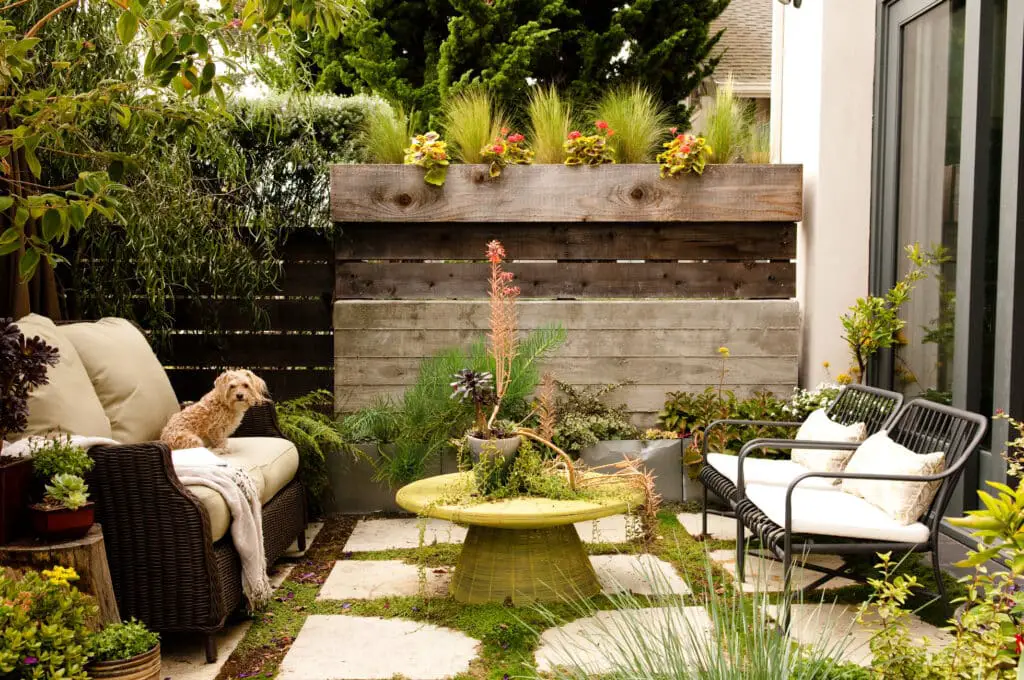
How do you decorate a porch with plants?
Porch Decor Ideas with Plants
- Hanging Planters and Dining Tables.
- Plants on Built-in Wall Trellis.
- A Shared Porch.
- Curtains for Privacy.
- An Organized Porch.
- Plants and Swinging Couch.
- An Italian Entrance.
- Long Porch with Hanging Chair.
Before delving into the world of plant selection and decor, take a moment to assess your porch space. Consider the available sunlight, prevailing weather conditions, and the size and layout of your porch. This evaluation will help you determine the types of plants that will thrive in your specific environment and assist in planning their placement for optimal growth and visual appeal.
Selecting the right plants is crucial to creating a stunning porch display. Opt for a mix of plant varieties that suit your climate and the amount of sunlight your porch receives. Utilize a combination of potted plants, hanging baskets, and climbing vines to add depth and dimension to your decor. Consider evergreen shrubs for year-round interest, seasonal flowers for bursts of color, and trailing plants to cascade gracefully over railings or trellises.
Establishing a cohesive design theme will bring harmony to your porch decor. Choose a color palette that complements your home’s exterior, and select plants with blooms and foliage that harmonize with one another. For a classic look, opt for a symmetrical arrangement with matching planters. Alternatively, embrace an eclectic style by mixing different plant types and containers for a more laid-back and bohemian atmosphere.
How do you decorate a place with plants?
- Start Simple & Learn As You Go.
- Purchase Your Plants From a Local Garden Center.
- Match Your Plants to Your Design Style for a Cohesive Look.
- Liven Up Your Bathroom With High-Humidity Plants.
- Brighten Up Dark Corners With Low-Light Plants.
- Create Contrast With Plants of All Sizes.
- Make a Statement With an Oversized Plant.
Before you begin decorating with plants, assess your indoor space to determine the most suitable locations for your green additions. Consider the amount of natural light each area receives throughout the day. Some plants thrive in bright, sunny spots, while others prefer low-light conditions. Observe the temperature and humidity levels, as these factors will also impact plant selection.
Selecting the right plants is crucial to successful indoor decor. Start with low-maintenance options for beginners or busy individuals. Snake plants, pothos, and spider plants are hardy and forgiving choices. If you have a green thumb and can dedicate more time to plant care, consider adding fiddle-leaf figs, peace lilies, or orchids for an elegant touch. Choose plants that complement your space in terms of size, shape, and color.
Plant groupings create a visually appealing display and add depth to your decor. Mix and match plants of varying heights and leaf shapes to create an eye-catching arrangement. Combine floor plants with tabletop varieties and hanging plants for a dynamic effect. Utilize plant stands, shelves, or wall-mounted holders to elevate smaller plants and create a sense of verticality.
Plant containers play a significant role in enhancing your decor. Opt for containers that complement your interior style and color scheme. Neutral-colored pots provide a timeless look, while bold-colored or patterned planters add a pop of personality. Ensure that your containers have drainage holes to prevent overwatering and root rot.
How to decorate room with real plants?
He believes there’s no such thing as too much green, so here he offers six simple ways to fill every room in your home with houseplants.
- Surround seating areas with plants.
- Dress up your dining room.
- Use a group of closely spaced plants as a focal point.
- Go vertical.
- Tuck plants into unexpected spaces
Before diving into decorating with real plants, assess your room’s characteristics. Observe the natural light conditions, as this will influence the types of plants that will thrive. North-facing rooms may have lower light levels, while south-facing rooms may receive direct sunlight throughout the day. Consider the temperature and humidity levels in your room, as some plants are more suited to specific environmental conditions.
Choosing the right plants is vital for successful room decor. Opt for plants that match your room’s light and environmental conditions. Low-light plants like peace lilies and snake plants are perfect for dimmer areas, while sun-loving plants such as succulents and spider plants thrive in sunny spots. Mix and match different plant varieties to create an engaging and visually appealing display.
Grouping plants together creates a cohesive and captivating arrangement in your room. Combine plants of various sizes and leaf shapes to add depth and texture to your decor. Create focal points by clustering plants on shelves, windowsills, or side tables. Utilize plant stands and decorative pots to elevate smaller plants and create a sense of verticality.
Hanging planters are an excellent way to add greenery to your room without taking up floor space. Install hooks or brackets near windows or from the ceiling to hang cascading plants. Macrame plant hangers can add a bohemian touch, while modern geometric hanging planters can lend a contemporary flair.
What decor style uses a lot of plants?
Scandinavian interior design is all about bringing nature indoors, and quite literally any living plant complements the simple, functional elements of this style.
The botanical decor style is all about celebrating the beauty of nature and its calming effects. It aims to blur the lines between indoors and outdoors, creating a seamless connection with the natural world. This style brings a sense of tranquility and a breath of fresh air into your home.
In botanical decor, creating an “indoor jungle” is a popular approach. This involves clustering various plants together in different sizes and heights, creating a lush and diverse green space within your home. Floor plants, hanging plants, and shelves with plant groupings contribute to the layered and textured look of an indoor jungle.
To take the botanical decor to the next level, some enthusiasts opt for green walls or vertical gardens. These installations cover entire walls with living plants, creating a striking and immersive experience. Green walls not only beautify the space but also improve air quality and provide a natural focal point.
Botanical decor exudes a sense of coziness and organic charm. Adding soft, natural textiles like cotton and linen, coupled with wooden furniture and woven accessories, helps to create a warm and inviting atmosphere.
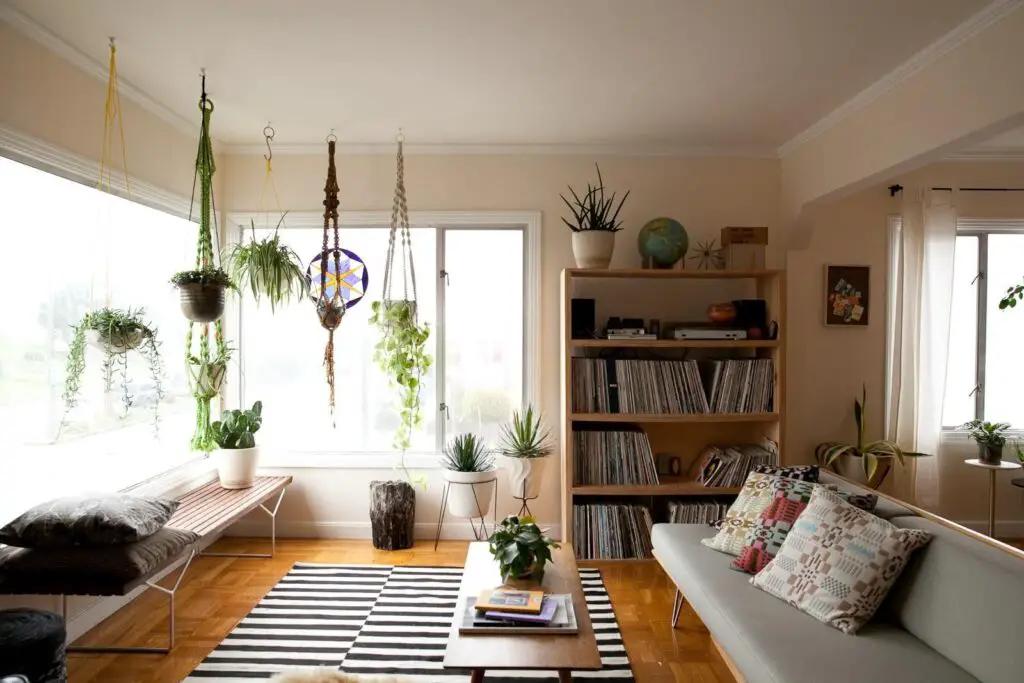
Can plants be used for decoration?
Plants are low-cost interior decorations that can bring nature into the home. Interior designers use houseplants to fill empty corners, create warmth, and add a touch of personality, texture, or color.
Plants can be used in various areas of a home to add life and character. Common places for plant decor include living rooms, bedrooms, kitchens, and bathrooms. Consider using floor plants, hanging plants, or tabletop varieties to create a harmonious green space.
Introducing plants into office spaces can have a positive impact on employee well-being and productivity. Desk plants, office greenery walls, and communal plant areas can make the workplace more enjoyable and inspiring.
Incorporating plants in restaurants and cafes can create a cozy and inviting ambiance for patrons. Living walls, potted plants, and fresh flowers on tables can enhance the dining experience and contribute to a pleasant atmosphere.
Plants can be used creatively in event decoration for weddings, parties, and other special occasions. Floral arrangements, potted plants as centerpieces, and greenery arches are popular choices to add an elegant and natural touch to the event.
Plants are a versatile and beautiful option for decoration in any setting, from homes and offices to restaurants and events. Beyond their aesthetic appeal, plants offer numerous benefits, including air purification, stress reduction, and a connection with nature.
Whether you choose to create a serene indoor garden or add simple potted plants to your space, incorporating plants into your decor will undoubtedly elevate the ambiance and contribute to a healthier and more inviting environment.
What are decorative plants called?
Ornamental plants are those that are grown for decorative purposes in houses, gardens, and landscape design projects.
Aesthetic Appeal: Ornamental plants are selected for their ability to enhance the visual appeal of a space. They often have striking colors, intricate patterns, or unique forms that make them visually appealing.
Versatility: Ornamental plants come in various shapes, sizes, and growth habits, making them suitable for different landscapes, garden designs, and indoor decor.
Seasonal Interest: Many ornamental plants exhibit seasonal changes, such as flowering in spring, changing leaf colors in fall, or maintaining evergreen foliage throughout the year, adding interest to landscapes all year round.
Low Maintenance: While some ornamental plants require special care, many are low-maintenance and easy to grow, making them ideal choices for both experienced gardeners and beginners.
Environmental Benefits: Ornamental plants, especially when used in landscaping, contribute to environmental benefits like providing habitat for wildlife, improving air quality, and reducing soil erosion.
Ornamental plants, also known as decorative plants, are an integral part of landscaping, interior decor, and gardening. Valued for their aesthetic appeal, ornamental plants offer a wide array of colors, shapes, and growth habits that add beauty and interest to various settings.
From roses and orchids to hostas and Japanese maples, each ornamental plant brings its unique charm and character to create a visually captivating landscape or indoor oasis.
What is a planter decoration?
Pot decoration is the act of adding different materials (fabric, paint, clay, vinyl) to the outside of pots, urns, planters, and other terra cotta or ceramic containers in order to create something beautiful out of them. It’s really easy, even with the tapered shape that most pots provide.
Aesthetic Appeal: Planter decorations serve as artistic and visually appealing focal points. They add dimension and interest to spaces, turning ordinary areas into vibrant displays of nature’s beauty.
Space Optimization: By using planters, one can efficiently utilize space, especially in smaller areas or urban settings where traditional gardening might be limited.
Flexibility: Planters offer flexibility in terms of location, making it possible to create green spaces in areas with poor soil quality or limited access to sunlight.
Seasonal Adaptation: Planter decorations provide the flexibility to change plant selections according to seasonal preferences, allowing for ever-evolving and diverse displays.
Traditional Pots: Classic clay, terracotta, or ceramic pots are timeless choices for planter decorations. They come in various sizes, shapes, and designs to suit different aesthetics.
Hanging Planters: Suspended from ceilings or walls, hanging planters add a touch of elegance and save valuable floor space, making them ideal for small or vertical gardens.
How are plants used for decoration?
Plant Décor with Collection
You can place a few plants together and include other small objects around them for an aesthetic look. For example, you can put various succulents by placing each of them in curious small pots. Also Read: Home Interior Designs Using Plants to Make Your House Look Elegant!
Indoor plant decor involves incorporating plants inside living spaces to create a refreshing and calming atmosphere. Commonly used indoor plants include potted greenery, flowering plants, and cascading vines. The arrangement of plants on windowsills, shelves, coffee tables, and desks adds texture and color, turning any room into a vibrant sanctuary. Indoor plant decor not only enhances the visual appeal but also contributes to improved air quality and overall well-being.
Plants are an integral part of outdoor garden decor, contributing to the overall design and ambiance of the space. From colorful flower beds to lush green lawns and ornamental shrubs, a well-designed garden incorporates various plant varieties to create a harmonious and captivating environment. Trees, shrubs, and topiaries can be used as focal points, while flowering plants and seasonal displays add splashes of color and beauty throughout the year.
Plants play a significant role in event and party decor, adding a touch of natural elegance to celebrations. Floral arrangements, potted plants, and hanging planters are used as centerpieces, aisle decorations, and venue accents. Plants bring freshness and sophistication to weddings, parties, and corporate events, creating a memorable and inviting ambiance for guests.
In urban environments, landscaping with plants is an essential element of city beautification. Street planters, hanging baskets, and vertical gardens are used to add greenery to public spaces, such as parks, plazas, and city streets. Urban landscaping not only enhances the aesthetics but also provides a respite from the concrete jungle, promoting a sense of connection with nature.
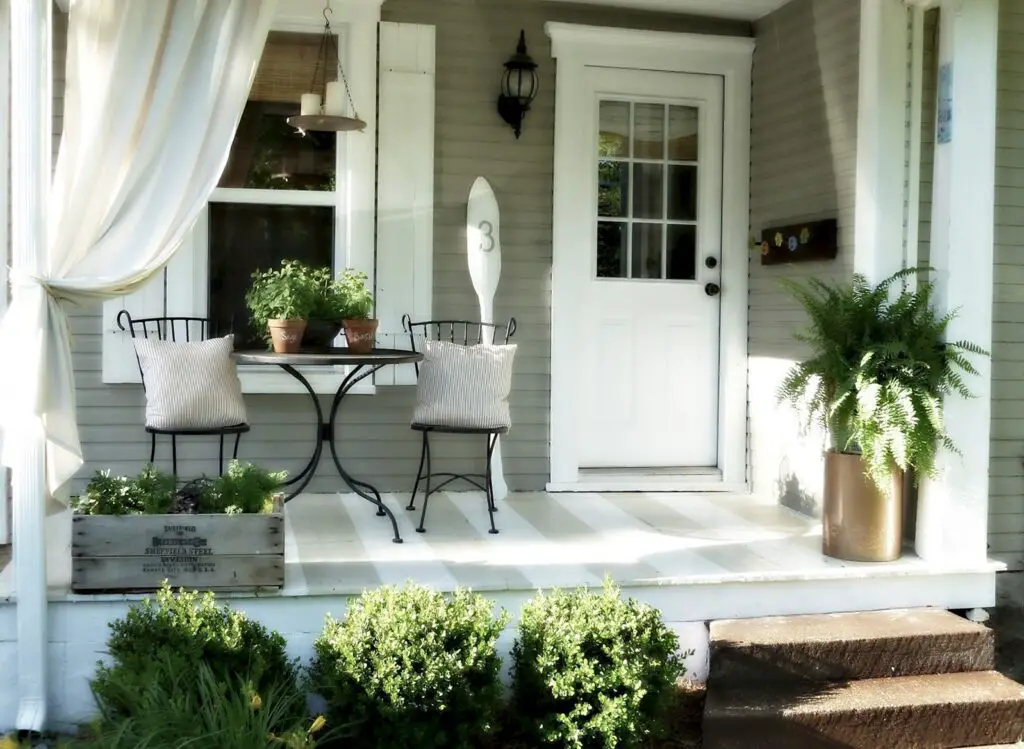
Conclusion
Starting with a well-thought-out plan that takes into account sunlight, weather, and plant varieties is key to ensuring your plants thrive. Remember that a diverse mix of flowers, foliage, and hardscape elements can add layers and depth to your patio, making it visually captivating. This green journey and transform your patio into an enchanting outdoor retreat.
Maintaining your plants is equally important to keep them healthy and beautiful. Regular watering, pruning, and fertilizing will reward you with lush growth and blooming displays. Embrace your creativity and personalize your patio with unique plant combinations, decorative patio, and cozy seating areas to make it a true reflection of your style and personality.
A well-thought-out patio design will ensure a seamless integration between the natural and man-made elements. Moreover, a patio adorned with plants offers more than just aesthetic appeal. It becomes a space for relaxation, contemplation, and connection with nature. The sights, scents, and sounds of your botanical haven will provide a soothing escape from the stresses of daily life, allowing you to unwind and find peace right in your own backyard.



